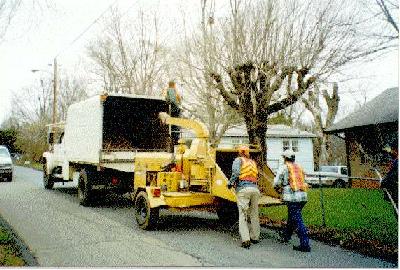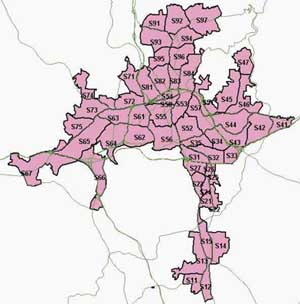
Map of Water Lines
The City of Asheville
Spatial Data and GIS in Western North Carolina |
Background |
 The City of Asheville is located in the Blue Ridge Mountains of Western North Carolina. The City has a population of 67,848 and serves as the economic and service center for a 22 county region. The City's 900-person workforce provides basic City services including fire and police protection, planning and economic development, public works (streets, traffic, solid waste and stormwater services), parks and recreation, and water.
The City of Asheville is located in the Blue Ridge Mountains of Western North Carolina. The City has a population of 67,848 and serves as the economic and service center for a 22 county region. The City's 900-person workforce provides basic City services including fire and police protection, planning and economic development, public works (streets, traffic, solid waste and stormwater services), parks and recreation, and water.
Mission Statement |
What City services benefit from Spatial Data and GIS? |
Water Resources |
| Community Contact |
|
David Keyes 259-5983 |

Public Works |

| Community Contact |
|
Linda Foster 259-5938 |
Police |
 |
| Community Contact |
|
Debbie Yanik 259-5883 |
Planning and Development |
| Community Contact |
|
Paul Benson 259-5843 |